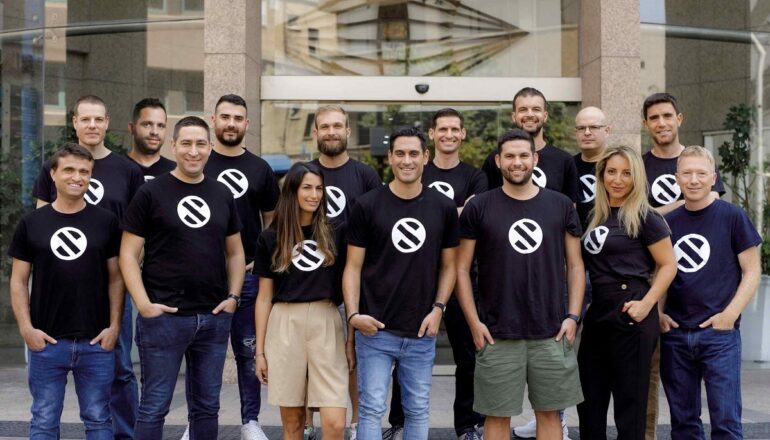TL;DR:
- Senser, an AIOps platform, secures $9.5 million seed funding round led by Eclipse, with participation from Amdocs and private investors.
- Utilizes eBPF technology to monitor infrastructure within the Linux kernel, enhancing observability.
- Shifts focus from traditional dashboards to providing a comprehensive map of the company’s infrastructure.
- Co-founders bring military and networking expertise to tackle observability challenges.
- Senser’s vision is to reduce alert fatigue by providing context and system event alerts.
- Expansion includes active recruitment for marketing roles in the United States.
Main AI News:
In a bold move that marks its official debut, Senser, an innovative AIOps platform, has emerged from stealth with a resounding announcement of a successful $9.5 million seed funding round. This milestone was spearheaded by Eclipse, a leading investment firm, and also featured contributions from Amdocs and select private investors. Senser, headquartered in Tel Aviv, distinguishes itself by harnessing the power of machine learning to empower developers and operations teams in pinpointing the root causes of service disruptions and outages.
At its core, Senser leverages the increasingly favored eBPF technology to meticulously monitor an organization’s infrastructure. eBPF’s distinctive advantage lies in its seamless integration within the Linux kernel, enabling comprehensive monitoring of network and application traffic without imposing significant additional overhead. While the observability market experiences saturation, Senser boldly stakes its claim with an AI-driven approach, aiming to gain a competitive edge.
Amir Krayden, the CEO and co-founder of Senser, emphasized the challenge of contextualizing copious amounts of data. He remarked, “If you take the word observability, which implies something more contextual, can you have cognition about that? That cognition is what interests us: Can we save time by aiding the DevOps team or the site reliability teams with the ability to look at all this data and look for the unknowns that they’re facing?” Senser’s vision extends beyond traditional dashboards, promising users access to a comprehensive map of their company’s overall infrastructure, spanning virtual machines, Kubernetes clusters, microservices, and more, all with a laser focus on production environments.
The genesis of Senser can be traced back to the enduring friendship of its co-founders: Amir Krayden, Yuval Lev, and Or Sadeh, who shared a camaraderie forged during their service in the Israel Defense Forces. Their subsequent stint at DriveNets, a well-established networking company, exposed them to the intricacies of telco hardware routers and cloud-native technologies. Debugging these intricate systems proved to be a formidable challenge with the tools available at the time.
The trio harbored ambitions of venturing into entrepreneurship, a vision supported by DriveNets CEO Ido Susan, who later became an investor in Senser. Lev recounted, “We knew we wanted to start our own product company or startup, and then, after roughly six years [at DriveNets], there was an opportunity for starting Senser and nail into a thing that hurt us so much that we said we must do something.”
Senser’s value proposition centers on simplifying the lives of operations teams and alleviating alert fatigue. Krayden elaborated, “Essentially, with existing tools, you will be alerted for every anomaly in the system. In a distributed system, you’re getting alerted for a lot of things. Our view is that you don’t need to get alerted for a symptom; you need to get alerted about a system event.” Senser aims to provide not just alerts but also the “why” and “what went wrong,” offering transparency and explainability as integral components of its service.
Lior Susan, founding partner of Eclipse, highlighted the significance of Senser’s approach, stating, “Industrial 4.0 apps — such as warehouse automation or robotics — and outdoor mapping apps like drones must run reliably on both clients and edge locations in order to power the foundation of physical industries. Through the underlying use of eBPF and machine learning, Senser is ensuring these apps are performing at the highest levels, while solving problems — like the staggering cost of configuration and maintenance and the lack of useful insights — in a unique way.”
With a current headcount of 17 employees and rapid expansion on the horizon, Senser is bucking the trend among seed-stage companies. Notably, the company is actively recruiting for various marketing roles in the United States, a strategic move in an era where effective storytelling and visibility are paramount. Krayden noted, “I think it is part of this era in the market. Marketing is becoming much more important. It’s becoming a much larger part of this game in not only being able to have a good product but being able to tell a story and show the world what you’re doing — and do that early.”
Conclusion:
Senser’s successful funding round and innovative approach to observability using AI and eBPF technology position it to disrupt the market. The emphasis on context-driven alerts and transparent system event reporting addresses a pressing need for operations teams. Additionally, their proactive approach to marketing signals a recognition of the importance of storytelling and visibility in the evolving business landscape, setting them on a path to stand out in the competitive landscape.

